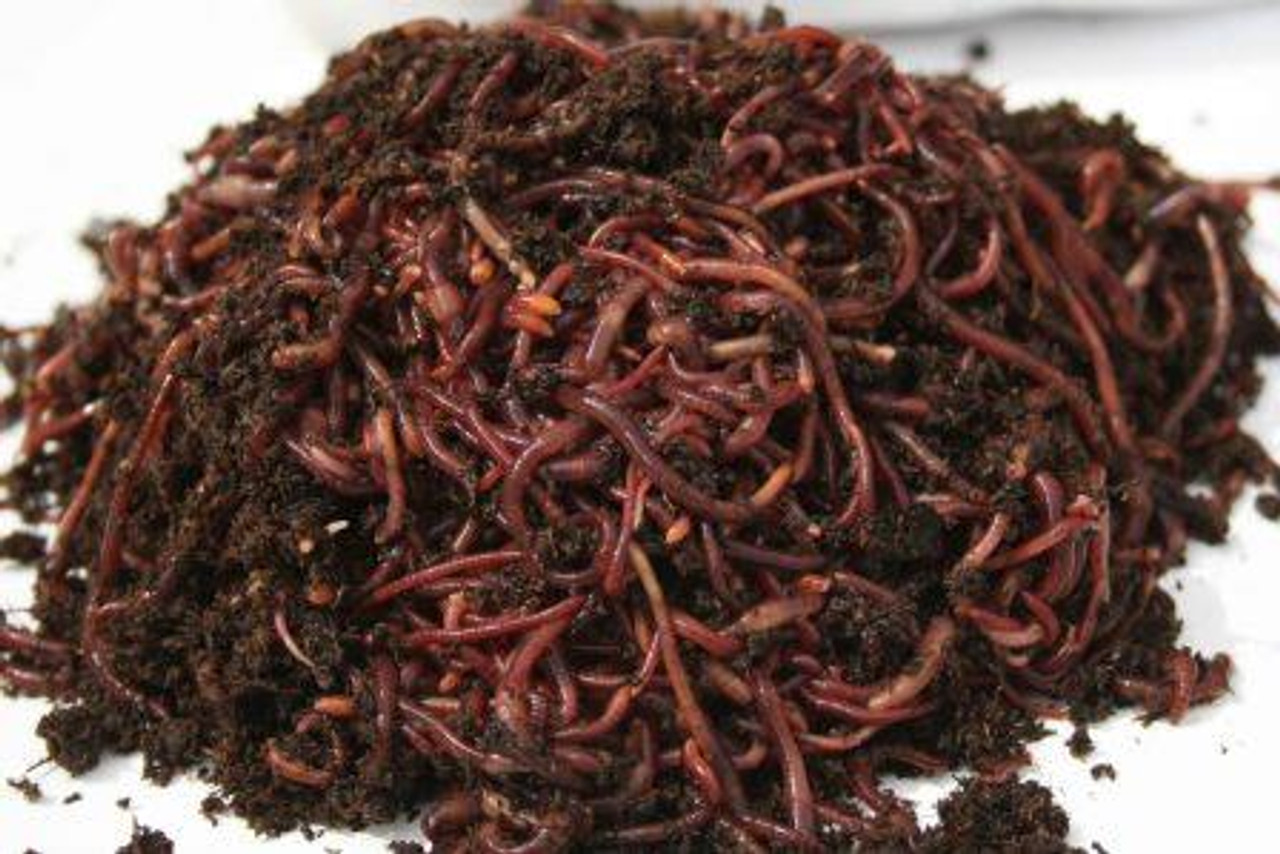Mastering Red Wiggler Composting: Essential Practices for Healthy And Balanced Composting
Mastering Red Wiggler Composting: Essential Practices for Healthy And Balanced Composting
Blog Article
Understanding the Advantages of Red Wiggler Composting: Exactly How This Reliable Method Changes Organic Waste Into Nutrient-Rich Soil Modifications
Red Wiggler composting, utilizing the species Eisenia fetida, presents a compelling strategy to natural waste administration, converting kitchen scraps and yard debris right into useful soil amendments. This method not only boosts dirt fertility however additionally addresses pressing ecological concerns, including land fill waste decrease and greenhouse gas exhausts.
What Are Red Wigglers?
Red wigglers, medically recognized as Eisenia fetida, are a types of earthworm that play an essential function in vermicomposting systems. These worms are characterized by their reddish-brown color, fractional bodies, and a distinctive capability to prosper in organic-rich environments, making them excellent for composting applications - Red Wiggler Composting. Unlike their garden-dwelling equivalents, red wigglers choose to populate the upper layers of soil, where decomposing issue is plentiful
Commonly determining between 3 to 4 inches in size, red wigglers have a high reproductive rate, allowing them to multiply rapidly under optimum conditions. They possess an one-of-a-kind digestion system that enables them to process natural waste efficiently, transforming it right into nutrient-rich castings, which are very helpful for plant development.
Their tolerance to varying dampness levels and temperature varies even more boosts their utility in vermicomposting configurations, making them a favored option amongst composting enthusiasts. In addition, red wigglers are aerobic microorganisms, which necessitates a well-aerated composting setting, guaranteeing effective decay. Understanding the organic traits and habits of red wigglers is necessary for optimizing their use in lasting waste management techniques.

Benefits of Vermicomposting
Taking advantage of the power of vermicomposting offers a plethora of agricultural and environmental advantages. To start with, it considerably reduces organic waste in garbage dumps, thereby lessening methane exhausts, a potent greenhouse gas. By diverting food scraps and lawn waste to vermicomposting, we sustain a more sustainable waste administration system.
In addition, vermicomposting boosts dirt health. The castings produced by red wigglers are rich in necessary nutrients, germs, and enzymes, boosting dirt structure and fertility. This nutrient-rich change advertises durable plant growth and enhances water retention, lowering the demand for chemical plant foods.
Additionally, vermicomposting fosters biodiversity in the dirt ecological community. The intro of beneficial microorganisms from worm castings help in condition reductions and nutrient biking, producing a healthier environment for plants.
Financially, vermicomposting minimizes the expenses connected with chemical inputs and waste disposal. Farmers and garden enthusiasts can grow premium produce at reduced costs, adding to food protection and sustainability.
Just How to Begin Composting
Starting a composting venture can be a simple and gratifying process. To start, choose a suitable area that is well-drained and gets partial sunlight. This will aid preserve a well balanced temperature, critical for the composting process. Next off, select a compost container or produce a designated location in your yard, ensuring it is conveniently available for gathering and adding products compost.
Gather natural materials such as kitchen scraps, backyard waste, and shredded paper. Aim for a well balanced mix of 'environment-friendly' materials, high in nitrogen (e.g., fruit scraps, coffee premises), and 'brownish' products, rich in carbon (e.g., dried out fallen leaves, cardboard) A ratio of about 2:1 green to brownish products is perfect.
Begin layering your products, ensuring appropriate air flow by transforming the pile frequently. This advertises aerobic decay, reducing smells and speeding up the procedure. Display moisture levels; the garden compost needs to seem like a moist sponge yet not extremely you could try this out wet.
Nutrient Profile of Vermicompost
Composting, specifically with red wigglers, produces a nutrient-rich item recognized as vermicompost. This organic amendment is differentiated by its high focus of crucial nutrients, making it an important source for horticulture and farming. Vermicompost typically contains elevated levels of macronutrients such as nitrogen, potassium, and phosphorus, which are vital for plant development. In addition, it gives trace elements like iron, calcium, and magnesium, cultivating durable plant advancement and enhancing soil wellness.
The microbial activity present in vermicompost better improves its profile, presenting valuable microorganisms and fungis that advertise nutrition availability and uptake in plants. This organic element aids in subduing plant conditions and enhancing soil framework, causing enhanced water retention and oygenation.

Environmental Influence of Composting
The environmental influence of composting, particularly with making use of red wigglers, is multifaceted and extensive. This approach dramatically decreases the quantity of natural waste sent to garbage dumps, which subsequently lessens greenhouse gas discharges, specifically methane-- a potent factor to climate modification. By drawing away natural products from garbage dumps, red wiggler composting not just aids alleviate ecological degradation however additionally advertises sustainable waste monitoring practices.

Additionally, composting adds to carbon sequestration, as the process catches carbon dioxide from the atmosphere and stores it in the dirt. This all-natural process aids in combating climate change while enriching the dirt - Red Wiggler Composting. On the whole, red wiggler composting offers a sensible, green remedy for waste monitoring and ecological sustainability, advertising much healthier environments and a much more sustainable future
Conclusion
In conclusion, Red Wiggler composting offers as an efficient method for transforming natural waste into beneficial soil modifications. The process not only improves soil fertility and framework yet likewise reduces ecological issues linked with waste disposal.
Red Wiggler composting, using the species Eisenia fetida, provides a compelling approach to organic waste monitoring, converting cooking area scraps and backyard particles into beneficial soil modifications. Unlike their garden-dwelling counterparts, red wigglers favor to occupy the top layers of soil, where rotting issue is abundant.
The spreadings produced by red wigglers are abundant in essential nutrients, microorganisms, and enzymes, improving soil framework and fertility. The nutrient-rich results of red wiggler task improve soil structure, boost water retention, and promote biodiversity within the dirt environment.In verdict, Red Wiggler composting offers as a reliable method for transforming organic waste into useful dirt more tips here changes.
Report this page